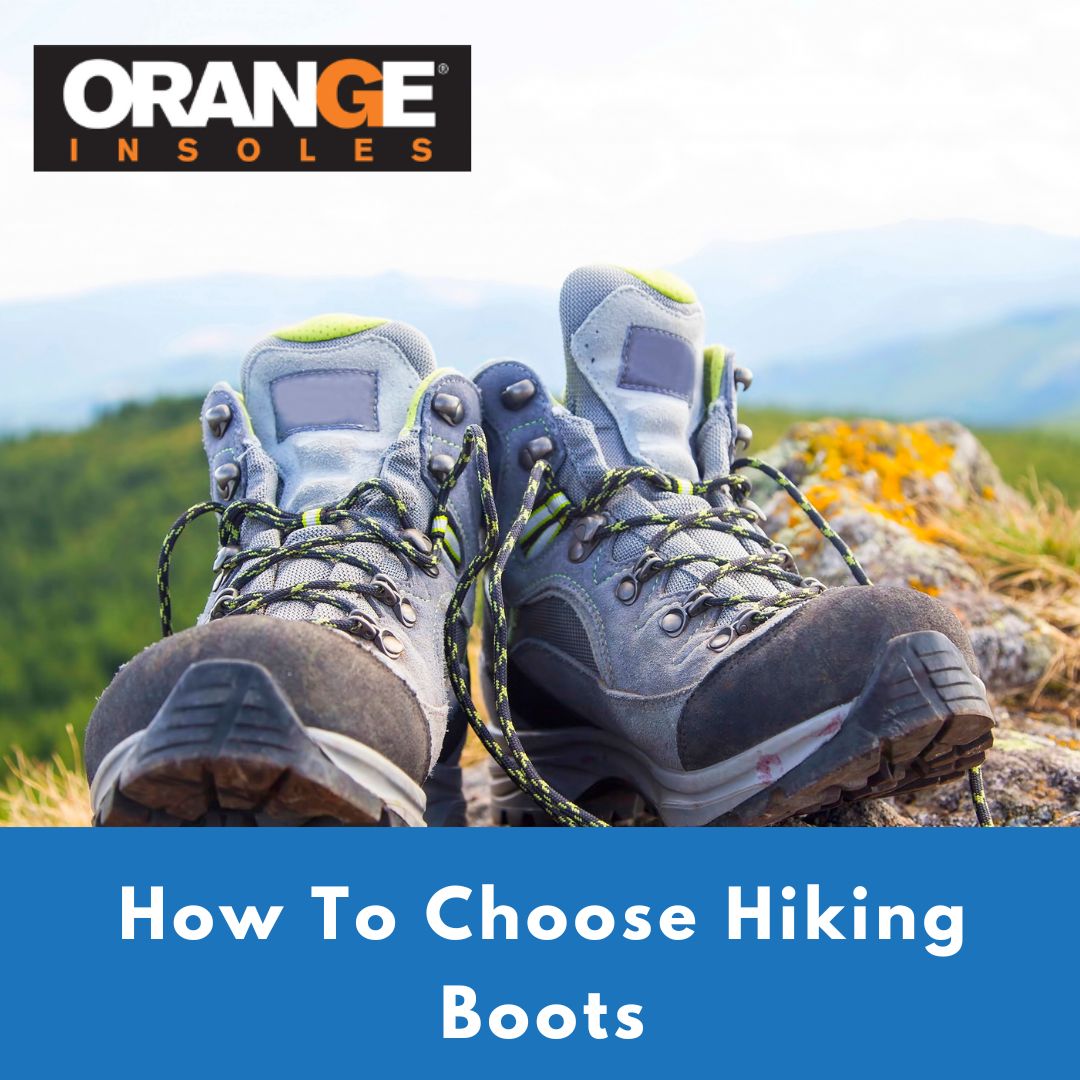When the sun comes out and the temperature warms and the snow melts, many head for the door and make a break for their favorite hiking trails. Even if you have warm weather all year long, before you head out to either rocky terrain or rolling hills, make sure your boots are going to support you on your adventures!
If you need to grab a new pair before hiking season kicks into high gear, make sure the ones you choose are going to support your feet and keep you pain and injury free! Here are a few important factors to consider when choosing hiking boots.
Before we dive in, you should know why it’s so important to choose the right boot. It’s not just a matter of comfort, though that is important. The wrong hiking boot can cause big problems but the right hiking boot can:
- Prevent blisters and sore spots by preventing rubbing
- Help prevent sprains on rocky terrain
- Provide traction in mud or on slippery or loose surfaces
- Protect your feet from sharp objects you might encounter on the trail
How Do I Choose The Right Hiking Boot?
Tips for Trying on Your Boot
You’ll obviously want to try on your hiking boots before you buy but when you’re testing out your hiking boots, it’s important to check out a few different features of the boot.
- Try them on with the socks, or the same type of sock, you’ll wear when hiking.
- Make sure you have wiggle room in the toe but the shoe should be snug around the heel
- Your foot shouldn’t slide around in the boot.
Pro-tip: If you use insoles to get extra support or to maintain proper alignment when walking or hiking, make sure to try the boot on with the insole in it. This helps you get an idea of the feel and fit of the boot plus the insole. Insoles can be a great way to help with leg or low back pain when hiking.
Consider the Terrain
Where will you be hiking? Make sure to consider your terrain when choosing your boots. The floor of the store is going to be nice and smooth but if you will be hiking on rugged, rocky terrain, you’ll need a boot with a sturdy sole and good ankle support. Flip the shoe over and make sure the boot has a wide bottom, especially if you’ll be on rough terrain. This will provide extra support and balance.
If the trails around you are fairly smooth or flat, you might not need as heavy of a boot and this can help prevent fatigue in your feet and legs.
If you’re going to be walking somewhere that tends to get wet or damp, you’ll want to make sure your boot has proper waterproofing because wet feet can cause blisters and sores and cut your trip short quickly.
If you’ll be hiking in high temperatures, choose boots with breathable materials to prevent your feet from sweating or getting overheated.
Do Your Homework
You’ll want to make sure to do some research before you purchase. A hiking boot is an important purchase and you don’t want to choose one that won’t fit your needs. Going into a local sporting or footwear store is a great idea if you want to talk to an expert. Local stores, rather than big chains, will have employees that have the time and expertise to chat with you about your experience and find the right boots for you.
You should also check reviews. While every boot is going to feel different for everyone, reviews are a great way to make sure you are getting a quality boot that will fit your experience.
And, of course, you’ll want to try on several different pairs and even brands before purchasing as every boot is slightly different and has different features.
Besides making sure you’re prepared for emergencies, choosing the right pair of boots is one of the most important things you can do before heading out on any hiking trip! Don’t let an ankle injury or sore feet slow you down, choose the right boot and get the support you need.

























































